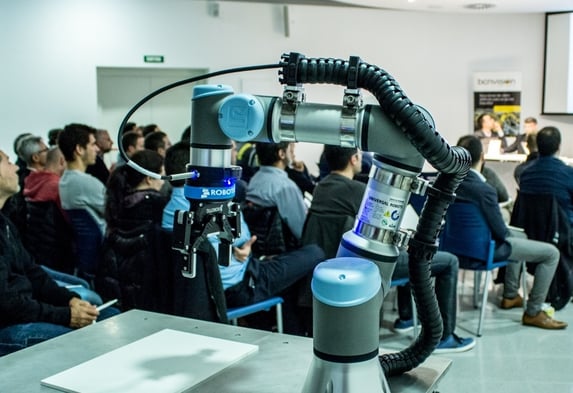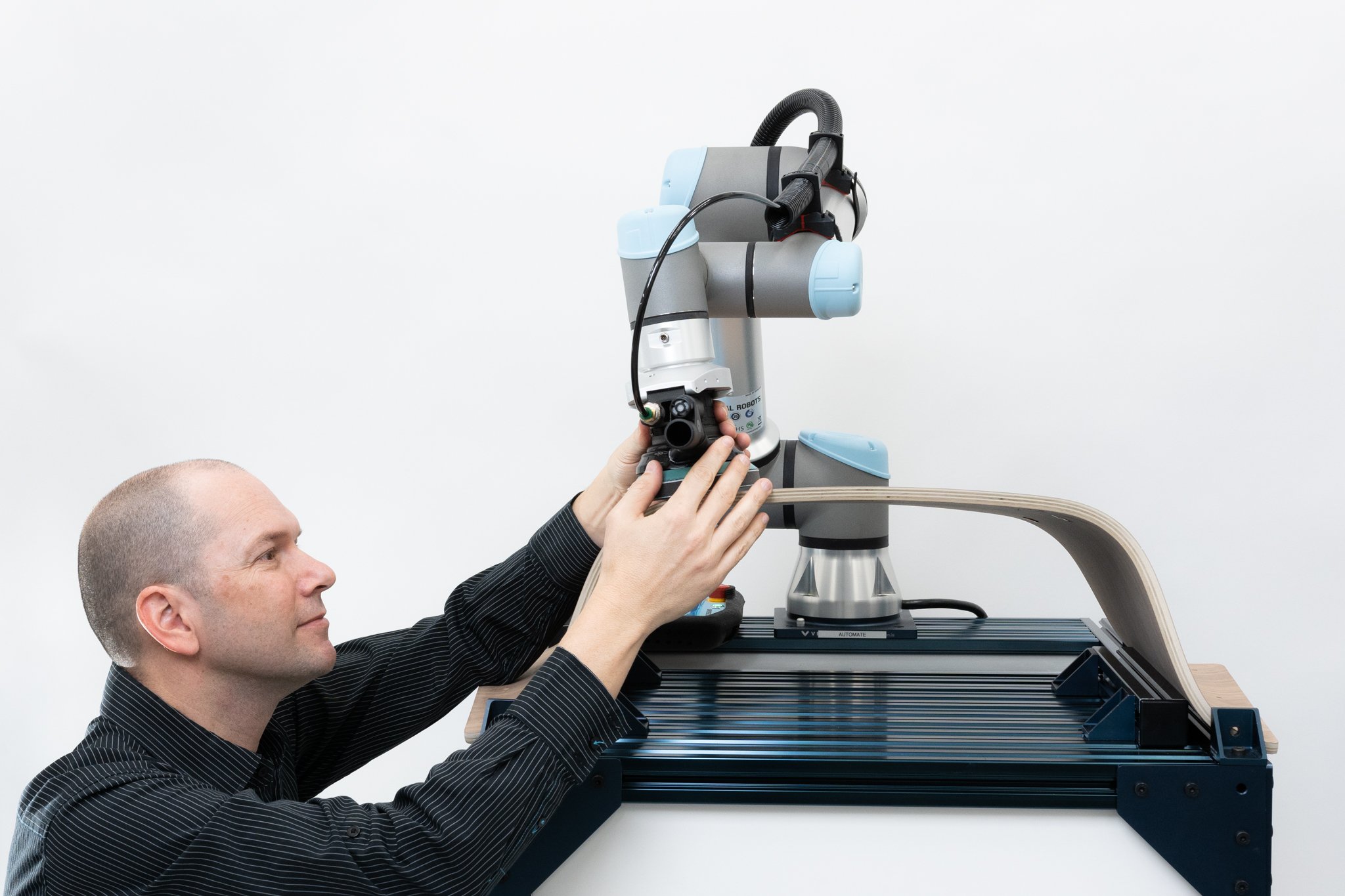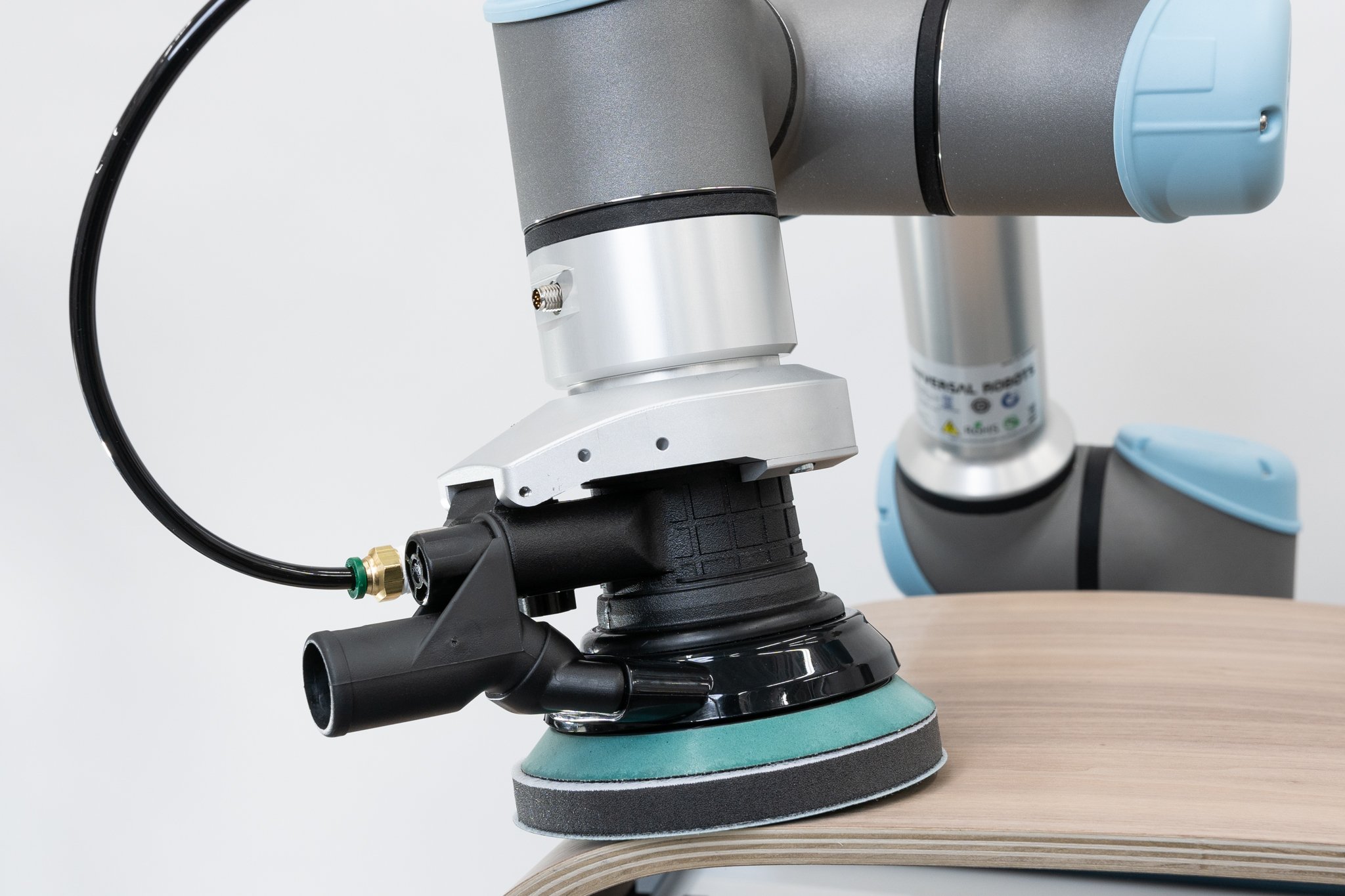How Robotics Training Helps Create New Applications

Posted on Mar 29, 2017 7:00 AM. 6 min read time
What does it mean if your company is considering a move to in-house robotics expertise? Will the training take up too much of your time? How will the move change the business? In this article, we look at two case studies to see how in-house robotics training can give you more time to work on innovative new applications.

So, your company is considering a move to in-house robotics expertise. Perhaps you have been using collaborative robots for a while, or perhaps they are completely new to you. You're wondering: What changes will the training make? Will it just be a waste of my time and disrupt the operations? Will it be worth it?
As a skilled engineer, you are probably quite happy to learn to program the robot yourself. After all, collaborative robots are very easy to operate and integrate. However, developing in-house robotics expertise means more than simply having one robotics-trained engineer on the team.
While many in-house teams start with just one expert, a move to in-house expertise is about developing a culture of robotics within the whole business.
In this article, we look at two examples of companies which have successfully incorporated collaborative robots into their businesses. It's amazing to see the difference in their cultures of robotic innovation.
Robotics Outsourcing vs a Culture of Training: Two Case Studies
The first company, Trelleborg Sealing Solutions, went the traditional route and hired an external integrator. The second, Tegra Medical, decided to take it on all themselves and train their existing workforce in robotics.
Case Study 1: Using Cobots as Safer Industrial Robots
Trelleborg Sealing Solutions is a Danish manufacturing company who recently began using Universal Robots. They started big, installing 42 robots in just 18 months.
As he says in the video, Jasper Riis, the company's Head of Production, had been looking for an automation solution for over ten years but had been unsuccessful. As a result of this, the approach he took when he discovered URs is more similar to industrial automation — quite different from the small, highly flexible applications of collaborative robots that we often see.
Each UR has effectively become just an add-on part to each CNC machine, performing machine tending. As he says "When we buy a new machine we also order a robot for it." This is a completely valid approach, and it is clearly very effective for Trelleborg's purposes.
But, what about in-house expertise?
Trelleborg doesn't seem to have opted for a culture of in-house robotics expertise, at least not at this early stage. Instead, they used an external integrator. This makes sense for such a uniform application. All the robots are doing very similar jobs and they wanted the integration to happen as quickly as possible.
Machine operators in the company are able to program the robots at a basic level, but that seems to be all the robotics training they have at this stage. The operators' jobs have remained pretty similar to the machine tending they did previously. The main difference is one of scale: before, each worker would tend three machines simultaneously, now they can tend eight.
In the case of Trelleborg, the collaborative robots are effectively being used as a smaller, safer alternative to traditional industrial robots.
Case Study 2: Cobots as Part of a Culture of Innovation.
Tegra Medical has taken a completely different approach. The most important thing for them was that they could complete the integration in-house. As Hal Blenkhorn, Director of Manufacturing, says "What we were hoping to find was a platform that was scalable, something that we could take internally — that we could do all the engineering on, the integration, by ourselves without an outside resource or integrator."
The way Tegra introduced collaborative robots into their business is quite familiar to us. They started small, with a single UR5 robot, and then moved up to three UR5s on different machines.
A culture of training and innovation seems to be a key part of Tegra's approach. While the workers at Trelleborg had kept similar jobs, Tegra trained their team to move up a level. As Blenkhorn says: "No one is going to lose their job to a robot. We're trying to [add more value to] them, to train them new skills, whether it's a different operation or they become the robot supervisor in that area."
The culture of in-house expertise meant that Tegra has been able to get very innovative with their use of robots. Taking lessons from their first three integrations, they embarked on an ambitious application for their next robot, a UR10. As he explains: "The challenges in this last cell were running three different products on three different operations. It's unusual for us and it's unusual in the industry, to have a mixed model cell like that that's feeding three [different] products simultaneously."
I wonder if such innovation would have been possible without a culture of robotic innovation within the company. Because they had Blenkhorn's robotics expertise on the team, he was able to come up with ideas for new applications. With an outsourced integrator, this innovation might not have been possible.
However, you have got to ask yourself: Would he have had time to develop these new applications if other members of the team had not been trained to use the robots?
By taking over the basic programming functions, the team has given Blenkhorn more time to develop new applications. The team is even able to get involved in developing these new applications. We can see this clearly when Senior Manufacturing Engineer Paul Quitzau talks about their next application: "We are very excited, we have purchased our fourth robot and it's going to go into another area of our company where we perform laser marking. […] I was able to piece together the entire application without much issue, and I'm not a programmer, I'm a mechanical person."
Robot Training Produces a Culture of Innovation
Robotics training is integral to a culture of in-house robotics expertise. It gives the workforce the ability to think about new applications and the skills to develop them. As Trelleborg's Jasper Riis says: "Not only did the workers learn new tasks, they also started to think differently."
At Trelleborg, the robots allowed the company to increase production to an impressive level. But, at Tegra the culture of robotics experties means that they are always looking out for new and innovative applications. These include applications with less tangible benefits than simply increased throughput. As Tegra's Hal Blenkhorn says: "Future applications here at Tegra? We could use them not only for machine tending, we might want to use them to aid some areas where we could use some process stability."
If you're interested in taking your robotic applications to the next level, as these two companies did, make sure to download our eBook Scaling Your Robotic Capabilites. 
What changes could robotics training make in your business? What worries do you have about in-house expertise? Do you know other examples where robotics expertise changed a business? Tell us in the comments below or join the discussion on LinkedIn, Twitter, Facebook or the DoF professional robotics community.







Leave a comment